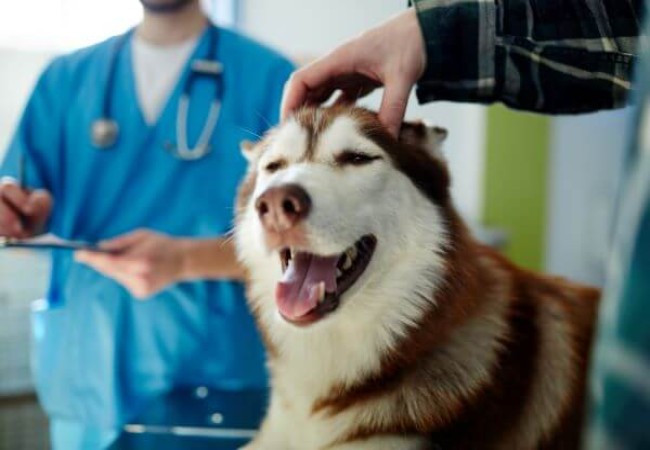Vet Guide to 2025: Secondhand Smoke Risks for Pets & How to Protect Them 🩺🐶

In this article
Vet Guide to 2025: Secondhand Smoke Risks for Pets & How to Protect Them 🩺🐶
By Dr. Duncan Houston BVSc
Secondhand (SHS) and thirdhand smoke (THS) pose serious hidden dangers to all pets—dogs, cats, birds, small mammals—even fish. Smoke lingers on surfaces, fur, and in the air, exposing pets to toxic chemicals from tobacco, marijuana, vaping, and nicotine products. I'm Dr Duncan Houston BVSc, and in this detailed guide, we explore the many health risks, symptoms to watch for, prevention strategies, and how Ask A Vet. 🐶🐱🐦🐾
1. What Are SHS & THS? 🚬
Secondhand smoke is directly inhaled smoke from cigarettes, vapes, or marijuana. Thirdhand smoke refers to poisons that remain on furniture, walls, carpets, fur—even after the air is clear.
2. How Pets Get Exposed
- 🐶 Dogs: Inhale SHS; fur retains THS; nose length affects where cancer develops.
- 🐱 Cats: Groom off toxins from fur—higher lymphoma & oral cancer risk.
- 🐦 Birds: Extremely sensitive—lung, skin, eye, reproductive issues.
- 🐹 Small pets (rabbits, guinea pigs, ferrets): Suffer from pneumonia, emphysema, heart effects, GI problems, and weight loss.
- 🐟 Fish: Nicotine dissolves in tanks—muscle spasms, death.
3. Health Risks by Species
Dogs
- 🍃 Respiratory issues: bronchitis, asthma, eye infections.
- 🎗️ Cancers: nasal (long‑snouted breeds), lung, bladder (6× risk in Scottish Terriers).
- ❤️ Heart disease and allergies.
Cats
- 🐾 Asthma, lung and oral cancers, and lymphoma doubled or tripled risk.
Birds & Small Pets
- 🐦 Birds: pneumonia, respiratory disease, skin, eye, heart, and fertility issues.
- 🐭 Rabbits/guinea pigs: lung damage, emphysema, slow growth.
- 🐟 Fish: nicotine poisoning from tank water.
4. Signs Your Pet May Be Affected 🩺
- 📉 Lethargy, reduced appetite
- 🫁 Coughing, sneezing, wheezing
- 👁️ Eye irritation, redness, discharge
- 🧬 Growths, lumps, swollen lymph nodes
- 🐾 Nasal discharge, bad breath, bladder changes
- 🐦 Feather plucking or droppings, breathing distress
- 🐟 Muscle twitching, color change, fish die-offs
5. Diagnosis & Tests 🔬
- Veterinary exam: respiratory, dental, lymph node assessment
- Diagnostics: cytology, imaging, cancer screening
- Biomarkers: cotinine levels indicate smoke exposure.
6. Prevention & Home Safety 🏡
- 🚭 Quit smoking entirely—for you and your pets’ health.
- ❄️ Designate and enforce smoke-free zones.
- 🚿 If smoking, go outside and change clothes before reentering
- 🧼 Use high-quality air purifiers and ventilate—but not as sole protection
- 🧺 Clean carpets, wash bedding, and wipe fur regularly
7. What to Do if Concerned 📞
- Observe and track potential symptoms
- Consult your vet—and use the Ask A Vet app for remote support
- Request diagnostics and implement early cancer screening
8. FAQs
- Q: Is vaping safer for my pets?
- A: No—e-cigarettes still emit nicotine and toxins; long-term effects are unknown.
- Q: Does smoking by an open window keep pets safe?
- A: Not enough. Even outdoor smoking contaminates clothes, fur, and indoor air.
- Q: Can I wash my pet to remove residue?
- A: Bathing helps, but toxins settle on furniture too—focus on full home cleanup.
Conclusion
Secondhand and thirdhand smoke put pets at risk of respiratory disease, cancer, eye/skin conditions, nicotine poisoning, and more. Protect your pets by quitting smoking, establishing smoke-free zones, deep-cleaning your home, and seeking early diagnostic screening. With remote support via Ask A Vet, you can create a healthier environment for your furry, feathered, or finned family members. 🐾






